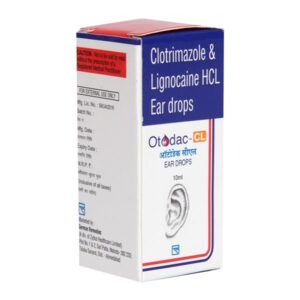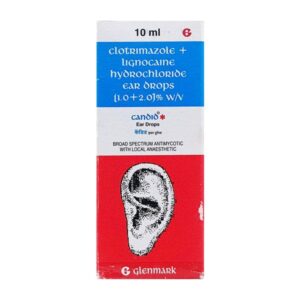CLOTRIMAZOLE + LIGNOCAINE
Clotrimazole: Clotrimazole is an antifungal medication used to treat fungal infections of the skin, including athlete’s foot, jock itch, and ringworm. It belongs to a class of drugs called azoles and works by stopping the growth of fungus.
The drug comes in various forms, such as creams, lotions, powders, and oral lozenges. Topical forms are applied directly to the affected area, while the oral lozenges are dissolved slowly in the mouth.
The dose and duration of treatment depend on the specific fungal infection being treated. It is important to follow the instructions provided by your healthcare provider or follow the directions on the product label.
Common side effects of clotrimazole include skin irritation, itching, and a burning sensation at the application site. These effects are usually mild and should improve with continued use. However, if any severe or persistent side effects occur, it is important to seek medical attention.
Clotrimazole is generally considered safe for most people when used as directed. However, it may interact with other medications or medical conditions. It is important to inform your healthcare provider about all medications, supplements, and medical conditions you have before starting clotrimazole.
Overall, clotrimazole is an effective antifungal medication used to treat various fungal infections of the skin. It is widely available over-the-counter and also by prescription in some forms.
Lignocaine: Lignocaine, also known as Lidocaine, is a local anesthetic medication that is used to numb or block pain sensations. It is commonly used in various medical and dental procedures, including surgeries, dental work, and dermatological procedures. Additionally, it is also used as a treatment for specific types of heart arrhythmias.
The primary mechanism of action of lignocaine involves blocking sodium channels, preventing the initiation and conduction of nerve impulses. By inhibiting the influx of sodium ions into neurons, lignocaine interrupts the transmission of pain signals and numbs the area.
The dose of lignocaine can vary depending on the specific procedure and the patient’s individual requirements. It is typically administered as a gel, cream, ointment, patch, injectable solution, or as a local infiltration. The dose and method of administration should be determined by a healthcare professional.
As with any medication, side effects can occur when using lignocaine. Some common side effects include local irritation, redness, swelling, or a sensation of burning or stinging at the site of application or injection. In rare cases, more severe side effects may occur, such as an allergic reaction, difficulty breathing, dizziness, or changes in heart rhythm. It is important to seek medical attention if any concerning side effects occur.
Lignocaine should be used with caution in individuals with a known hypersensitivity to the drug or anesthetics of the same class. It should also be used cautiously in patients with certain cardiac conditions or liver dysfunction. As lignocaine can potentially interact with other medications, it is important to inform healthcare providers about any other medications being taken.
Overall, lignocaine is a widely used local anesthetic medication with various applications. It works by blocking pain signals and can be used in a range of medical and dental procedures. It is important to follow proper dosing and instructions, as well as monitor for any potential side effects.


